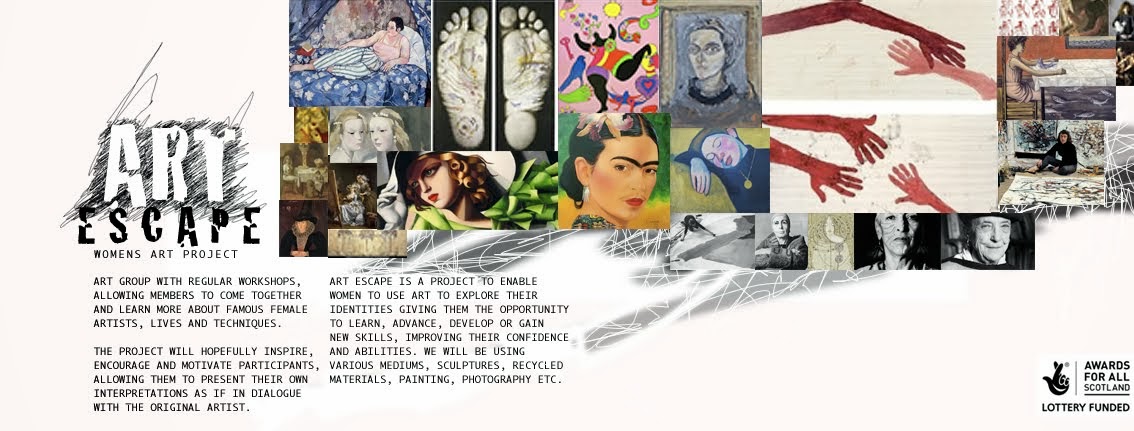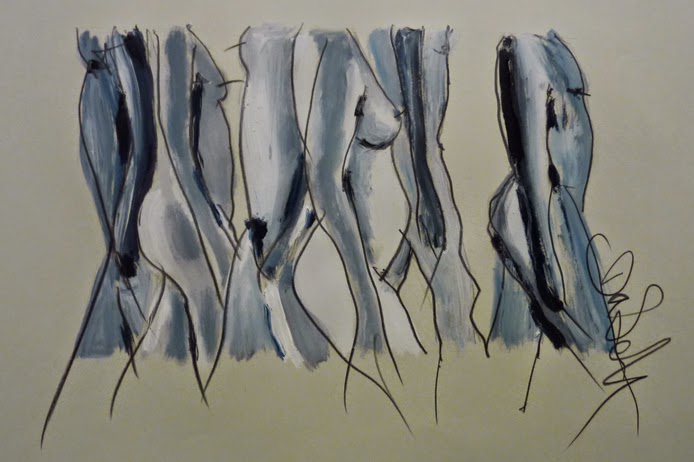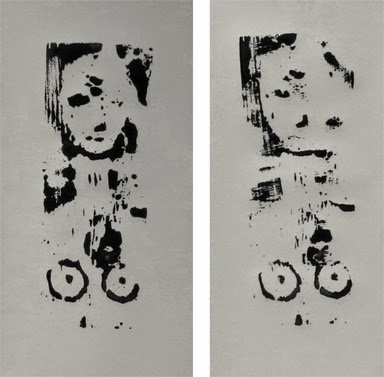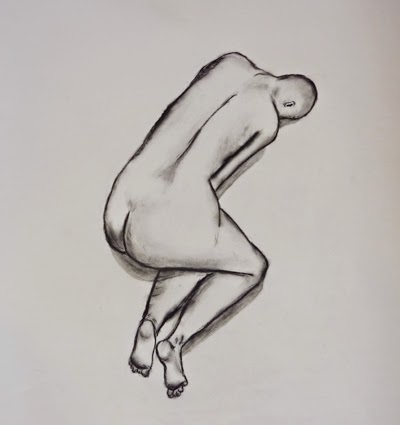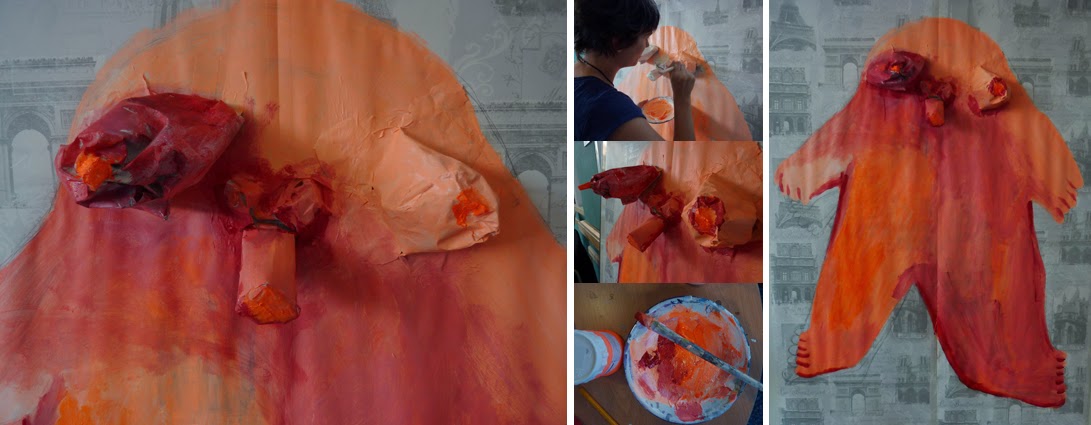Wednesday 19 November 2014
Friday 14 November 2014
Sunday 2 November 2014
Sunday 26 October 2014
Thursday 23 October 2014
Wednesday 15 October 2014
Friday 3 October 2014
EMILY CARR
Emily Carr is one of the most famous artists in Canada. Her paintings are essentially turned toward nature and landscapes of the West coast and above all towards Native’s culture. More than an artist she was an adventurer, and travelled trough Amerindian territories trying to understand this other world from the inside. And even if her point of view was mainly influenced by the occidental thoughts of her time, her approach was certainly sincere.
Emily Carr was born in 1871 in Victoria, British Columbia. Very early she has a great interest in art. She grew up in Victoria in the 1800s, in a society where there was no place for multiculturalism. However, not so far, was a Songhees village and Natives were a normal part of the environment. Carr began to realize sketches of Indian canoes... She had a real sympathy for the Natives, especially because they were living outside of the social class and far from the constraints of a world that she was herself rejecting. Because she had a difficult relationship with her family (especially her father), and because she was interested in art not only as a leisure, she was truly considering herself as an “outsider”. The funny fact is that Emily hated two types of characters: the Englishmen and the Missionaries, nonetheless her first expedition in 1899 with her devout sister Lizzie, was to a mission in the remote Nuu-Chah-Nulth village near Ucluelet on the West coast of Vancouver. The scenery that she discovered was truly sad. The village was devastated by disease and poverty. However this place and the wide forest around will impress her a lot. Moreover, Emily was feeling comfortable with Natives. Despite the language barrier, with smiles and gestures she tried to get in contact with the population and realized some sketches of Nootka villages. The inhabitants will give her the nickname “Klee Wyck” (“the laughing one”).
In 1907, with Alice (one of her other sisters), Emily went to Alaska. They visited the town of Skagway and Sitka. It was a very important trip as she discovered for the first time carved poles. This period is decisive in Emily Carr’s carrier, despite the fact she was completely ignorant about Native’s culture she took a great decision: to make an inventory of the totems before they disappeared while trying to understand their signification. Except for some topographers and Paul Kane, an Irish painter who decided to make a report on Native’s lifestyle from the Great Lakes to the Pacific in the 1840s, it was the first time that someone, especially a woman, proposed such project. Her goal was not easy, she was not really wealthy or either healthy (she was always sick). Moreover, the weather was sometimes really harsh in these remote areas. In her late writings she tells her misadventures.
Emily Carr was really passionate about Native’s culture, but she was misunderstood. Her work wasn’t recognized on its own merit. People were too narrow-minded and were not able to appreciate her paintings in its true value. During a big exhibition in 1913, she struggled to point out the historic importance of her work. She was one among the first to be aware of the slow degradation of Native’s culture and among the first who wanted to act against it. Totems poles were in natural environment and were subjected to bad weather and passing time, many of them rotting. However, despite her “historic obsession”, Carr’s paintings will change. Indeed, after a long journey in France in 1910, she began to use oil painting, more lively and emotional. But this still did not attract any audience. Added to this non-recognition was an ethic problem: she was aware that the image of a white woman in native territory could have been disturbing. For some she was taking advantage of Natives. But she never gave up.
Surprisingly, the success came at first thanks to her writings. Indeed, she wrote several books about her trips and adventures on the West coast. After a while people started to look differently at her paintings. However, by the end of her life, Emily Carr left out totem poles and began to work on a new topic: the forest. She spent most of her time often alone, painting trees and landscapes. Still lively and more abstract, these paintings are truly the quintessence of her career. A way to truly feel the immensity of Canada. Despite all the critics, sometimes understandable sometimes less, we can’t deny the hugeness of Emily’s work on Natives. She did several hundreds of paintings on this subject. And, despite a late recognition of her paintings, she was brave enough to struggle her whole life to impose her art vision and her ideas. The fact what she was looked as an “outsider” certainly helped in her task and contributed to her rapprochement with aboriginals. In all cases, beyond the realism or the historic precision she wanted to capture the essence of Northwest coast and tried to show a modern way of seeing Native materials.
More infos :http://www.museevirtuel.ca/sgc-cms/expositions-exhibitions/emily_carr/fr/index.php
https://www.emilycarr.com
(Léa Zelenkauskis)
Emily Carr is one of the most famous artists in Canada. Her paintings are essentially turned toward nature and landscapes of the West coast and above all towards Native’s culture. More than an artist she was an adventurer, and travelled trough Amerindian territories trying to understand this other world from the inside. And even if her point of view was mainly influenced by the occidental thoughts of her time, her approach was certainly sincere.
Emily Carr was born in 1871 in Victoria, British Columbia. Very early she has a great interest in art. She grew up in Victoria in the 1800s, in a society where there was no place for multiculturalism. However, not so far, was a Songhees village and Natives were a normal part of the environment. Carr began to realize sketches of Indian canoes... She had a real sympathy for the Natives, especially because they were living outside of the social class and far from the constraints of a world that she was herself rejecting. Because she had a difficult relationship with her family (especially her father), and because she was interested in art not only as a leisure, she was truly considering herself as an “outsider”. The funny fact is that Emily hated two types of characters: the Englishmen and the Missionaries, nonetheless her first expedition in 1899 with her devout sister Lizzie, was to a mission in the remote Nuu-Chah-Nulth village near Ucluelet on the West coast of Vancouver. The scenery that she discovered was truly sad. The village was devastated by disease and poverty. However this place and the wide forest around will impress her a lot. Moreover, Emily was feeling comfortable with Natives. Despite the language barrier, with smiles and gestures she tried to get in contact with the population and realized some sketches of Nootka villages. The inhabitants will give her the nickname “Klee Wyck” (“the laughing one”).
In 1907, with Alice (one of her other sisters), Emily went to Alaska. They visited the town of Skagway and Sitka. It was a very important trip as she discovered for the first time carved poles. This period is decisive in Emily Carr’s carrier, despite the fact she was completely ignorant about Native’s culture she took a great decision: to make an inventory of the totems before they disappeared while trying to understand their signification. Except for some topographers and Paul Kane, an Irish painter who decided to make a report on Native’s lifestyle from the Great Lakes to the Pacific in the 1840s, it was the first time that someone, especially a woman, proposed such project. Her goal was not easy, she was not really wealthy or either healthy (she was always sick). Moreover, the weather was sometimes really harsh in these remote areas. In her late writings she tells her misadventures.
Emily Carr was really passionate about Native’s culture, but she was misunderstood. Her work wasn’t recognized on its own merit. People were too narrow-minded and were not able to appreciate her paintings in its true value. During a big exhibition in 1913, she struggled to point out the historic importance of her work. She was one among the first to be aware of the slow degradation of Native’s culture and among the first who wanted to act against it. Totems poles were in natural environment and were subjected to bad weather and passing time, many of them rotting. However, despite her “historic obsession”, Carr’s paintings will change. Indeed, after a long journey in France in 1910, she began to use oil painting, more lively and emotional. But this still did not attract any audience. Added to this non-recognition was an ethic problem: she was aware that the image of a white woman in native territory could have been disturbing. For some she was taking advantage of Natives. But she never gave up.
Surprisingly, the success came at first thanks to her writings. Indeed, she wrote several books about her trips and adventures on the West coast. After a while people started to look differently at her paintings. However, by the end of her life, Emily Carr left out totem poles and began to work on a new topic: the forest. She spent most of her time often alone, painting trees and landscapes. Still lively and more abstract, these paintings are truly the quintessence of her career. A way to truly feel the immensity of Canada. Despite all the critics, sometimes understandable sometimes less, we can’t deny the hugeness of Emily’s work on Natives. She did several hundreds of paintings on this subject. And, despite a late recognition of her paintings, she was brave enough to struggle her whole life to impose her art vision and her ideas. The fact what she was looked as an “outsider” certainly helped in her task and contributed to her rapprochement with aboriginals. In all cases, beyond the realism or the historic precision she wanted to capture the essence of Northwest coast and tried to show a modern way of seeing Native materials.
More infos :http://www.museevirtuel.ca/sgc-cms/expositions-exhibitions/emily_carr/fr/index.php
https://www.emilycarr.com
(Léa Zelenkauskis)
Friday 26 September 2014
Thursday 25 September 2014
Saturday 13 September 2014
Thursday 11 September 2014
Tuesday 9 September 2014
Saturday 9 August 2014
Tuesday 29 July 2014
Friday 25 July 2014
Regina José Galindo
THE ART OF RESISTANCE
Regina José Galindo is not simply an uncomfortable reminder of Guatemala’s historical memory. She rejects any affiliation to political or religious activism. What she agrees on is to belong to the tradition of contemporary performance, which means using her body in a feminist criticism of the society. To be more explicit, as she said, she has not faith, she makes art. The mental supply to her work comes from her country’s history to diverge on both more general and complex issues.
Guatemala has a shaky and violent history, whether past or present. Dictatorship and corruption brought starving, minorities’ discrimination – mainly peasants and indigenous – mass rapes, absence of justice, to almost reach chaos. From all this resulted a hurt and dysfunctional society where crimes are not always solved and corruption rules. Since here we can extend Guatemala’s issues to Latin America troubles during the twentieth century. Moreover, the concepts extracted from facts such as ethic, humans’ rights and dignity, reach every country, which and that explains why R.J.G is exhibited in the whole world.
I would like to present briefly 3 of her most striking performances according me, which reveal how her work as an international voice and value and why the extreme acts and use of her body is not exhibitionism.
¿Quién puede borrar les huellas? (Who can erase the traces), 2003, Guatemala City
When the artist became aware of the previous dictator presidential candidature, she set up clinically what became her well-known performance.
One day was enough to buy human blood, to dress in black and decide to dip her bare feet in the bucket full of blood, to walk and leave feet prints through Guatemala City until the guards’ row of the National Palace. A violent and quiet scream to help remember.
“Guatemala is a country without memory”
No perdemos nada con nacer (We lose anything by being born), 2000, Guatemala City and Mexico City Violence as an artistic method, and so controversy and subversion, is that what could describe this one? Sedated thanks to her husband, the artist was put naked in a plastic bag and brought in the biggest rubbish dump of Guatemala City. Through the ballet of the people working, picking up stuff, moving the dirt mass, and thanks to the camera, crispation and understanding happen.
The performance was reproduced in the rubbish dump of Mexico City.
Breaking the ice, 2008, Norway
If you went to see Regina José Galindo in Norway, you would only have seen her naked seating in the middle of a cold room, for a long time. Maybe for two or three hours. Until that woman in the public gave her her hat, and launched the virtuous circle. Dress up the artist.
http://www.reginajosegalindo.com/
Sarah Netter
THE ART OF RESISTANCE
Regina José Galindo is not simply an uncomfortable reminder of Guatemala’s historical memory. She rejects any affiliation to political or religious activism. What she agrees on is to belong to the tradition of contemporary performance, which means using her body in a feminist criticism of the society. To be more explicit, as she said, she has not faith, she makes art. The mental supply to her work comes from her country’s history to diverge on both more general and complex issues.
Guatemala has a shaky and violent history, whether past or present. Dictatorship and corruption brought starving, minorities’ discrimination – mainly peasants and indigenous – mass rapes, absence of justice, to almost reach chaos. From all this resulted a hurt and dysfunctional society where crimes are not always solved and corruption rules. Since here we can extend Guatemala’s issues to Latin America troubles during the twentieth century. Moreover, the concepts extracted from facts such as ethic, humans’ rights and dignity, reach every country, which and that explains why R.J.G is exhibited in the whole world.
I would like to present briefly 3 of her most striking performances according me, which reveal how her work as an international voice and value and why the extreme acts and use of her body is not exhibitionism.
¿Quién puede borrar les huellas? (Who can erase the traces), 2003, Guatemala City
When the artist became aware of the previous dictator presidential candidature, she set up clinically what became her well-known performance.
One day was enough to buy human blood, to dress in black and decide to dip her bare feet in the bucket full of blood, to walk and leave feet prints through Guatemala City until the guards’ row of the National Palace. A violent and quiet scream to help remember.
“Guatemala is a country without memory”
No perdemos nada con nacer (We lose anything by being born), 2000, Guatemala City and Mexico City Violence as an artistic method, and so controversy and subversion, is that what could describe this one? Sedated thanks to her husband, the artist was put naked in a plastic bag and brought in the biggest rubbish dump of Guatemala City. Through the ballet of the people working, picking up stuff, moving the dirt mass, and thanks to the camera, crispation and understanding happen.
The performance was reproduced in the rubbish dump of Mexico City.
Breaking the ice, 2008, Norway
If you went to see Regina José Galindo in Norway, you would only have seen her naked seating in the middle of a cold room, for a long time. Maybe for two or three hours. Until that woman in the public gave her her hat, and launched the virtuous circle. Dress up the artist.
http://www.reginajosegalindo.com/
Sarah Netter
Thursday 24 July 2014
Sunday 20 July 2014
Subscribe to:
Posts (Atom)
